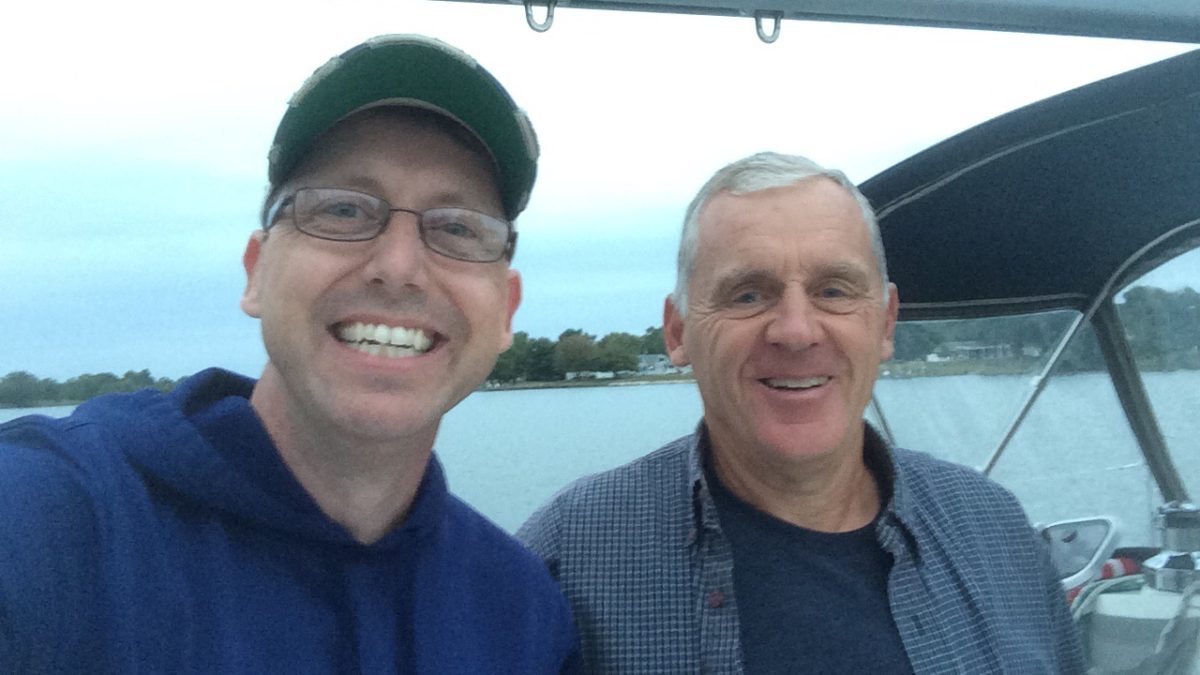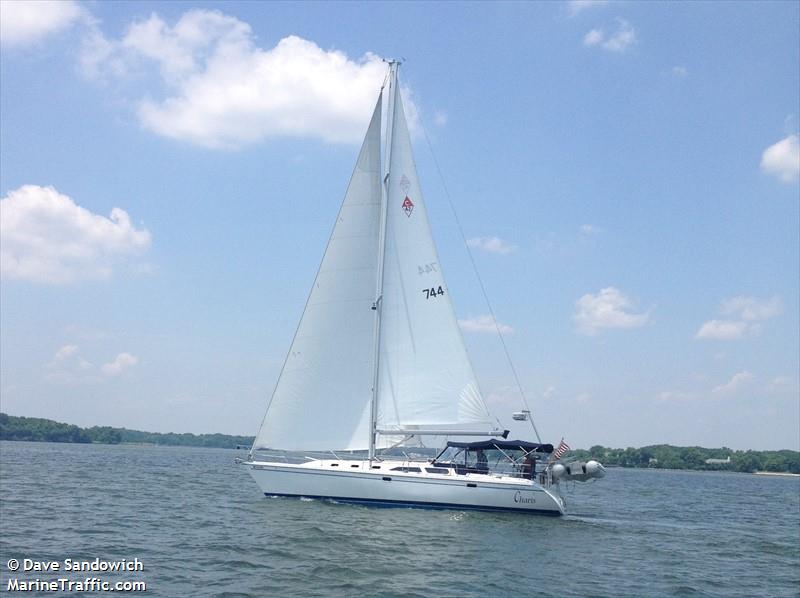Podcast: Play in new window | Download
A few weeks ago, I had the privilege to spend a few hours sailing on the Chesapeake Bay with Dave Sandowich.

He commanded his 42-foot sailboat, Charis, with the skill of a man who has spent the past forty years on the water anytime when he wasn’t leading his school or his family. Dave, a 65-year old father of three and grandfather of eight, had relocated to Kent Island, Maryland seven years earlier, renovating a 120-year old farm house – a house with a very important accessory – access to a pier for a permanent home for Charis. Although he still consults younger principals, he spends his spare time with his boat or entertaining guests and family members who visit through the sailing season May through October.
With sleeves rolled up, he showed me how to handle the jib sheet, trim the main sail , navigate through changing depths and mark distant points for reference. His graying hair blowing in the wind, Dave’s deep voice rattled like a coach patiently giving orders. “Keep the wind at 30 degrees and head for the red buoy ahead.”
“Sailing is a lot like leadership,” he explains. “On a sailboat your destination may be directly from where the wind is coming from. A sailboat can’t sail directly into the wind but it can work its way up wind by sailing at angles off the wind and working its way up wind to the destination. It is more work and will take more time but you will get there if you stay the course, apply your sailing knowledge and get the feedback from your instruments and instincts and adjust along the way.”
Dave’s Bio

David Sandowich is a retired principal from Kent Island, Maryland. For 21 years, he was the principal of Haddon Heights High School in Haddon Heights, NJ. Although he still consults younger principals, he spends a lot of time focused on his favorite hobby – sailing. His experience as a teacher, coach, principal, father, mentor and as a sailing-enthusiast has given him a unique perspective on leadership.
During our time together, Dave was a great listener and a teacher. I’m honored to share the lessons and metaphors we discussed about sailing, and how they nay help you rethink the way you lead. In this conversation, we talk about the following:
- Physics in sailing and leadership
- First order changes, vs second order changes
- Backwards design
- Advice for new leaders and experienced leaders
- Book and leadership recommendations
I thought about Dave’s words a day later when I was attending the National Association of Secondary School Principals. Joann Bartoletti, NASSP’s Executive Director, was introducing State Principals of the Year in a ceremony recognizing principals from across the country. First of all, Bartoletti pointed out recent research from the Pew Research Center showing 84% of respondents trust principals over every other public servant-leadership role for caring about others and working ethically on behalf of their communities.
“If we want great schools,” she said, “we need great principals. And the consensus is clear that principals matter.”
Schools can only grow to the capacity of their leaders, she went on to explain, And research shows what qualities effective principals possess for effectively leading schools. Using the Wallace Foundation’s research into effective principals, Bartoletti highlighted five qualities all great principals hold in common:
1. They shape a vision of academic success for all students.
2. They create a climate hospitable to education.
3. They cultivate leadership in others.
4. They improve classroom instruction.
5. They manage people, data and processes with the goal of school improvement (Wallace Foundation).
Lets’ Wrap This Up

Standing on the prow of Charis, I watched as the water cascaded below me. The jib and main sail had both been taken in, and I was holding the long pole for pulling the dock lines as we came into the slip. Dave stood in stern of the boat, steering and guiding us in. Soon we had snagged the lines and tied up. It had been a great day for sailing. The winds had been brisk and pushed us along the Chesapeake while the weather was moderate enough for long sleeves and bare feet.
As we wrapped up the excursion, Dave told me: “Some sailors will not want to do all that work and never sail to a destination that is up wind. Leadership is like that. It would be nice to just set a worthy objective point the organization in that direction and arrive in a reasonable amount of time. Rarely happens …you have to commit to the end destination and work your way toward it often headed in what seems away from your mark. You realize that it will take more time but you will see progress made. Feedback will be essential as you adjust , regroup and keep moving. As in sailing…it takes a skill set and the more experience you have and the more often you do it the results come easier.”
Now It’s Your Turn
What are some obstacles or “up-wind” moments you are facing? What are some strategies that can help you push toward goals instead of avoiding resistance? What is one step you can take this week to analyze your obstacles and strategize ways to use them as leverage toward your goals?
Sign-Up For Free Updates and Ebook
You can automatically receive new posts and a free Ebook, 8 Hats: Essential Roles for School Leaders. Let’s keep learning together!


